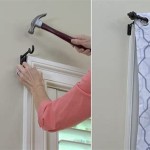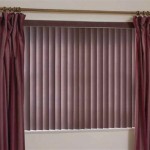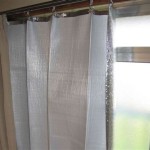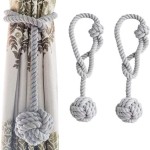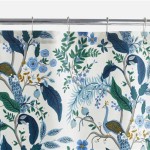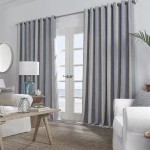Navigating Shower Curtain Solutions for Stand-Alone Tubs
Stand-alone tubs, also known as freestanding tubs, have become a prominent feature in modern bathroom design. Their aesthetic appeal stems from their independent placement, unattached to walls or enclosures. This design choice, however, presents a unique challenge: how to effectively contain water during showering without compromising the tub’s visual impact. Shower curtains for stand-alone tubs require careful consideration to ensure functionality and harmonize with the bathroom’s overall style.
Unlike typical bathtub and shower combinations integrated into a corner or alcove, stand-alone tubs necessitate a more creative approach to water containment. Standard curved or straight shower curtain rods are often unsuitable, leaving designers and homeowners to explore alternative solutions. This article details various options, their associated benefits, and factors to contemplate when selecting a shower curtain solution for a stand-alone tub.
Understanding the Challenges Posed by Stand-Alone Tubs
The primary challenge lies in the absence of surrounding walls to anchor a traditional shower curtain rod. The open design of a stand-alone tub means a custom or adaptable solution is needed to effectively prevent water from splashing onto the bathroom floor. This requires a support structure that can either independently suspend the curtain around the tub or utilize alternative mounting points. Failure to properly address this issue can lead to water damage, mold growth, and an overall unpleasant bathing experience.
Aesthetics are also a significant concern. The visual appeal of a stand-alone tub is often a key reason for its selection. An ill-fitting or poorly designed shower curtain solution can detract from this aesthetic, making the bathroom appear cluttered or unbalanced. The chosen curtain and its supporting structure must integrate seamlessly with the tub's design and the overall bathroom decor.
Furthermore, accessibility and ease of use should be considered. The shower curtain should be easy to open and close, and the support structure should not impede movement in and around the tub. The height of the curtain and the placement of the rod must be carefully calibrated to ensure effective water containment without making it difficult to enter or exit the tub.
Exploring Shower Curtain Rod Options for Stand-Alone Tubs
Several types of shower curtain rods are suitable for stand-alone tubs, each offering distinct advantages and disadvantages in terms of installation, aesthetics, and functionality.
Circular or Oval Shower Curtain Rods: These rods completely encircle the tub, offering maximum water containment. They are typically suspended from the ceiling using support rods or chains, ensuring stability and preventing sagging. Circular rods work well with round or oval-shaped tubs, while oval rods are better suited for rectangular or slightly elongated tubs. The choice of material for the rod is important; durable options like stainless steel or brass are recommended to resist corrosion in the humid bathroom environment.
Installation of a circular or oval rod typically requires professional assistance, particularly if ceiling reinforcement is needed. Precise measurements are critical to ensure the rod is centered over the tub and that the suspension points are securely anchored. The height of the rod should be determined based on the desired curtain length, allowing for a slight overlap with the tub's edge to prevent water leakage.
Rectangular Shower Curtain Rods: Similar to circular rods in terms of ceiling suspension, rectangular shower curtain rods provide a more structured and geometric look. They are particularly well-suited for rectangular or square stand-alone tubs, creating a defined shower enclosure. The rigidity of the rectangular shape often provides a more stable and visually balanced appearance compared to curved options.
As with circular rods, professional installation is typically recommended. The corners of the rectangular frame should be precisely aligned and securely fastened to prevent wobbling or misalignment. The dimensions of the rectangle should closely match the footprint of the tub to minimize water splashing and maximize coverage.
Wall-Mounted Shower Curtain Rods: In situations where one side of the tub is positioned close to a wall, a wall-mounted shower curtain rod may be a viable option. This approach involves attaching one end of the rod to the wall and suspending the other end from the ceiling. The curtain then drapes from the wall-mounted point, partially enclosing the tub.
While simpler to install than fully suspended rods, wall-mounted options require careful consideration of the wall's structural integrity. The wall must be capable of supporting the weight of the rod and curtain, especially when wet. Furthermore, the angle and length of the rod must be carefully calculated to ensure adequate water containment without creating an awkward or unbalanced appearance. A potential drawback is the lack of full enclosure, which may result in some water splashing outside the curtain area.
Freestanding Shower Curtain Frames: These frames are self-supporting structures that surround the tub without requiring ceiling or wall mounting. They typically consist of a metal frame with legs that rest on the floor, providing a stable base for the shower curtain. Freestanding frames offer a flexible and relatively easy-to-install option, particularly for homeowners who prefer to avoid drilling into walls or ceilings.
However, freestanding frames tend to be less sturdy than suspended rods and may be prone to wobbling or tipping, especially if the floor is uneven. The frame’s design may also appear bulky or intrusive in a smaller bathroom. Careful consideration should be given to the frame's weight distribution and stability to minimize the risk of accidents. Furthermore, the frame’s material should be rust-resistant and easy to clean to maintain its appearance and longevity.
Selecting the Right Shower Curtain Fabric and Design
The choice of shower curtain fabric and design is crucial for both functionality and aesthetics. The fabric should be water-resistant, durable, and easy to clean. The design should complement the tub and the overall bathroom decor.
Water-Resistant Fabrics: Polyester is a popular choice for shower curtains due to its water resistance, durability, and affordability. It is also relatively easy to clean and maintain. Vinyl shower curtains offer excellent water repellency but may have a less desirable texture and appearance. PEVA (polyethylene vinyl acetate) is a non-chlorinated alternative to vinyl, offering similar water-resistant properties with a reduced environmental impact. Fabric shower curtains, such as those made from cotton or linen, require a waterproof liner to prevent water damage and mold growth.
Design and Aesthetics: The shower curtain's design should complement the tub's style and the bathroom's overall aesthetic. Simple, minimalist designs work well with modern stand-alone tubs, while more ornate or patterned curtains may be suitable for traditional or vintage-inspired bathrooms. The color of the curtain should coordinate with the bathroom's color scheme, creating a cohesive and visually appealing look. Transparent or translucent shower curtains can help to maximize natural light and create a sense of spaciousness, while opaque curtains provide more privacy.
Length and Width Considerations: The shower curtain's length should be carefully chosen to prevent water from splashing onto the floor. Ideally, the curtain should extend slightly below the tub's edge, creating a seal that effectively contains water. The width of the curtain should be sufficient to fully enclose the tub, preventing gaps that could allow water to escape. For circular or oval rods, the curtain's circumference should match the rod's circumference. For rectangular rods, the curtain's width should match the perimeter of the rectangle. Extra-wide shower curtains may be necessary for larger stand-alone tubs.
Additional Considerations for Shower Curtain Installation
Beyond the choice of rod and curtain, several other factors can influence the success of a stand-alone tub shower curtain installation.
Ceiling Height and Structure: The ceiling's height and structure play a significant role in determining the feasibility of ceiling-mounted shower curtain rods. High ceilings may require longer support rods or chains, while weak or unstable ceilings may require reinforcement before installation. The presence of recessed lighting or HVAC ducts can also complicate the installation process. A structural engineer or experienced contractor may be needed to assess the ceiling's suitability and recommend appropriate reinforcement measures.
Floor Levelness: An uneven floor can cause freestanding shower curtain frames to wobble or tip, compromising their stability and effectiveness. Leveling the floor before installing the frame is recommended. In some cases, adjustable feet can be added to the frame to compensate for minor variations in floor levelness. However, significant floor unevenness may necessitate more extensive leveling work.
Ventilation: Proper bathroom ventilation is essential for preventing mold and mildew growth, particularly in enclosed shower areas. Ensure that the bathroom has adequate ventilation, either through a window or an exhaust fan. Running the exhaust fan during and after showering can help to remove excess moisture, reducing the risk of mold formation. Regularly cleaning the shower curtain and its liner can also help to prevent mold and mildew buildup.
Maintenance and Cleaning: Shower curtains and their liners should be regularly cleaned to prevent the accumulation of soap scum, mildew, and other debris. Fabric shower curtains can typically be machine-washed, while vinyl or PEVA curtains can be wiped down with a damp cloth and mild detergent. Shower curtain liners should be replaced periodically to maintain their water-resistant properties and prevent mold growth. The shower curtain rod and its support structure should also be cleaned regularly to remove dust and grime.
Selecting the ideal shower curtain solution for a stand-alone tub requires careful evaluation of various factors, including the tub's shape and size, the bathroom's layout and decor, and the homeowner's preferences and budget. By considering these aspects and exploring the available options, homeowners can create a functional and aesthetically pleasing shower enclosure that enhances the overall bathing experience.

9 Curtains For Freestanding Bathtub Ideas Tub Shower Combo Clawfoot

Vinyl Shower Curtain

Adding Accessories To A Freestanding Bathtub Badeloft

My Bathroom Renovation Shower Enclosure Solutions Thrifty Life By Cassie Fairy Inspiration For Living A Lovely On Budget

Utopia Alley 60 In Rustproof Aluminum D Shape Shower Rod With Ceiling Support For Freestanding Tubs Dr1rb

Diy 360 Hanging Shower Curtain Rod For Freestanding Deep Soak Tub Tips

12 Freestanding Bath With Shower Curtain Ideas Free Standing Tub Bathroom Design

Clawfoot Tub Shower Enclosure With Head

Design Décor

Aluminum Alloy Oval Shower Curtain Rod Hoop Square Shape Bathroom For Clawfoot Tub Free Standing Tubs

